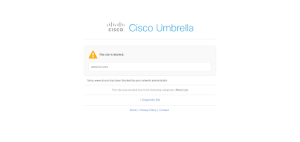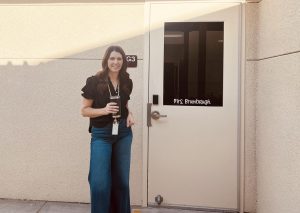Benefits of Virtual Learning
Now that Hybrid learning is underway, kids are able to see their friends and teachers again. Even though distance learning definitely had its drawbacks, there may have been some positives as well.
May 6, 2021
Over the past year, schools across the country have been shut down due to the pandemic, and teachers have had to rely on Virtual learning to teach their students. After a year of Virtual learning, schools have begun to open back up because of the availability of the vaccine and a drop in statewide Covid rates. Many students and staff have been ecstatic to finally return to the classroom, but are we leaving anything behind with distance learning?
While the response to distance learning has been largely negative, students and staff have differing perspectives on how distance learning has affected them.
“I would rather do six hours of Virtual learning than three hours of Hybrid learning. I would be happy to see my friends in person, but I’m not ready to go to school yet. Quarantine has made me more self-conscious,” said Tatiyana C.
With COVID-19 protocols implemented, some students preferred to relax at home instead of opting for social distancing and wearing masks. Students may argue that Hybrid learning is more stressful than attending daily classes online, and with how rough things have been this past year, they do not need additional things to stress over.
In contrast, Virtual learning can provide students with an easier and more flexible schedule. Kids on vacation can remain in class while on a camping trip and not worry about making up absent work. And, of course, the fact that kids can sneak food under their dining table or learn about algebraic equations in their pajamas is an added perk.
Hybrid learning can create a whole set of concerns for kids to worry about, as small as remembering to pack a water bottle or as big as remembering to carry specific textbooks and folders that would only be an arm’s length away at home.
“(Distance learning) allows (students) to do things a little more at their own pace as long as it’s done by the next day. And for some kids that have ADHD or anxiety issues, if they’re bouncing their knees or playing with something in their hands, you don’t see it in Virtual learning. They’re not as distracting to the class or drawing unwanted attention (to themselves),” said Mrs. Merry, a 7th-grade teacher at Day Creek Intermediate.
Another concern for parents is transportation. Many parents have jobs, and cannot afford to pick up or drop off their kids due to the shortened school day. Virtual learning has made life easier for parents since they no longer have to worry about getting their kids to school on time each day. And if kids miss Virtual class, the school office will send parents an automated voice message informing them of the absence.
“I’m more focused (at home). And there’s not as many kids distracting me,” said Tatiyana C.
While Tatiyana’s decision to stay home was mostly personal, transportation also played a role. Both of her parents work, and since Hybrid learning is either 8-11 am or 12-3 pm, there isn’t anyone available to drop her off or take her home.
Students and parents are not the only ones affected by distance learning. Virtual learning also affects the Day Creek staff.
Teachers have spent a year teaching to silence over Zoom. They’ve dealt with ongoing concerns of plagiarism, procrastination, and an endless lack of participation.
“Even though you’re still too quiet (in class). I like having you guys in person. I like the interaction. I like to see you!” Mrs. Merry said.
Another part of Virtual learning as required by the state of California is PE. As you can guess, there isn’t much excitement this year with physical education. Mrs. Rose, PE teacher at Day Creek Intermediate, said she’s “never seen so many ceiling fans and fashionable lights before.”
“(Last year) if I said, ‘we are running the Coyote Run,’ there was a mixed bag of reactions. Some students groaned and sighed in frustration. Some would cheer and get excited. I don’t get much feedback (now) during a lesson. I miss planning the rallies and having the students sing, dance, and play activities. The chants and screams of pure joy are a distant memory of mine,” said Mrs. Rose.
However, there are some advantages.
“I like the schedule, and I could prepare my lessons right after class because I wasn’t driving back and forth to school. I don’t have to attend to stinky locker room needs, like opening locks after a class full of sweaty students are standing around,” Mrs. Rose said.
But distance learning isn’t total bliss. Like in-person learning, it has its drawbacks.
“We didn’t have the ability to distribute or use exercise/PE-related equipment. PE teachers had to get creative and had students make their own equipment, like paddles and sock balls. It made it especially challenging when students did not have the necessary supplies to make their own equipment,” says Mrs. Ybarra.
Virtual students aren’t getting the same learning experience as Hybrid kids. First, there is the obvious lack of social interaction. Even if Hybrid school days are short, talking with friends can make going to school worth it.
“(Technical difficulties) are horrible. Your camera freezes, then your whole screen freezes, and then the teacher calls on you, and you don’t know what’s going on,” Tatiyana C. said. “Then the teacher’s pressuring you to answer the question.”
Distance learning also makes it difficult for some students to focus. With so many distractions at home and access to playing video games easier than ever before, teachers find themselves repeatedly calling on the same student before an answer is finally given.
It’s also affecting students’ grades and test scores. So many students’ work ethics have worsened as a result of the virus.
“Something’s due at 2:30, and I’ll forget about it and it’ll get marked late, and I’ll get a 50%,” Tatiyana C. said.
Some students have seen their grades decline due to the lack of in-class accountability. For others, it has become too easy to cheat, looking up problems, or having members of their household provide answers.
“We have had several cases of cheating. Parents taking their child’s iReady test for them, parents or siblings doing their child’s work, students using websites to get answers, turning in work that is plagiarized, etc. Instilling consequences has been difficult due to the distance involved. The most we really could do was give the student 0% for the grade and an ‘N’ in citizenship,” said Mrs. Merry.
Many school districts have decided not to do any standardized tests this year with all of these distractions. The ease of cheating for Virtual students raises doubts about test accuracy. In response, California is allowing districts to choose a district’s own standardized test as a replacement to track progress.
To many people, Hybrid learning continues to be a better option offering benefits that Virtual learning cannot. But there are always two sides to every coin.
“The coronavirus pandemic has a lot of dark sides… no matter how serious and sad all of this is, there are upsides as well,” said Forbes writer Jeroen Kraaijenbrink.







